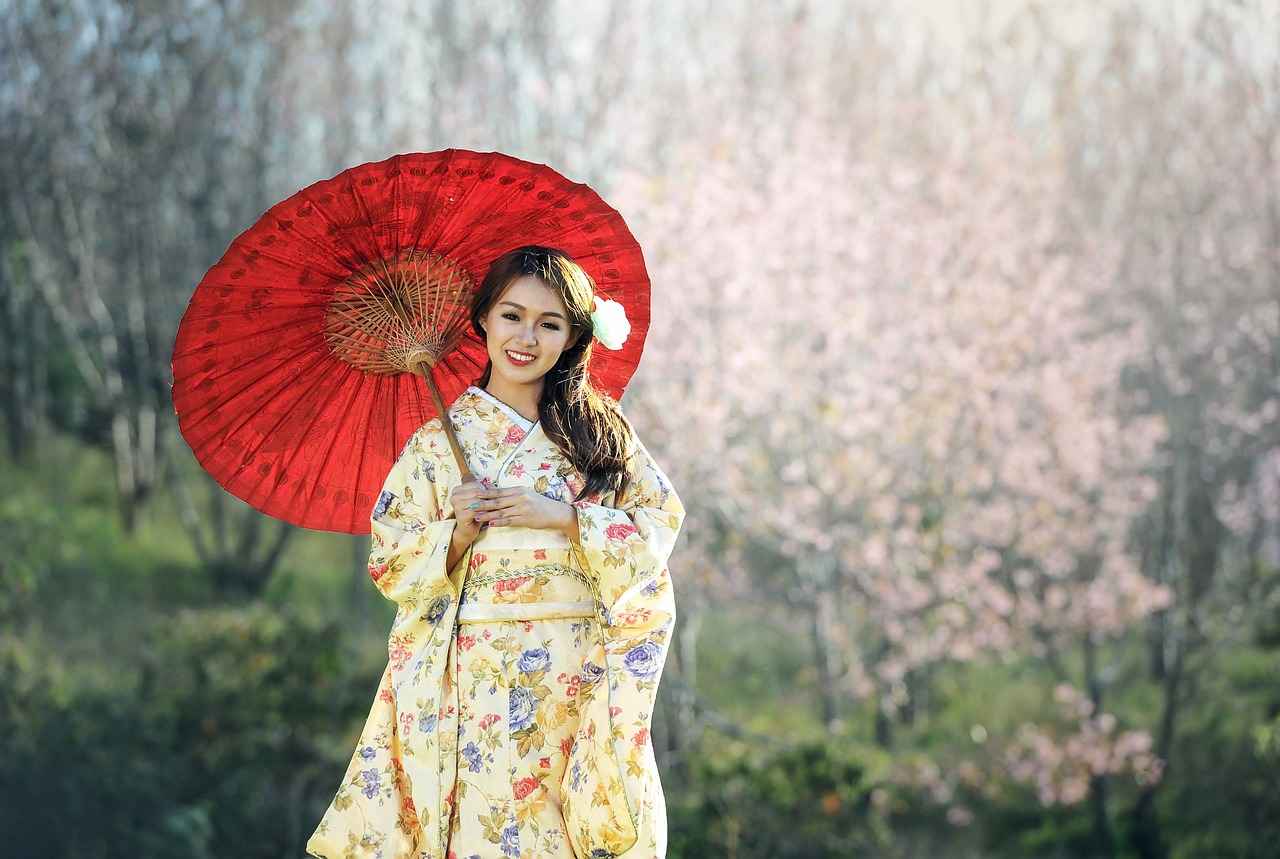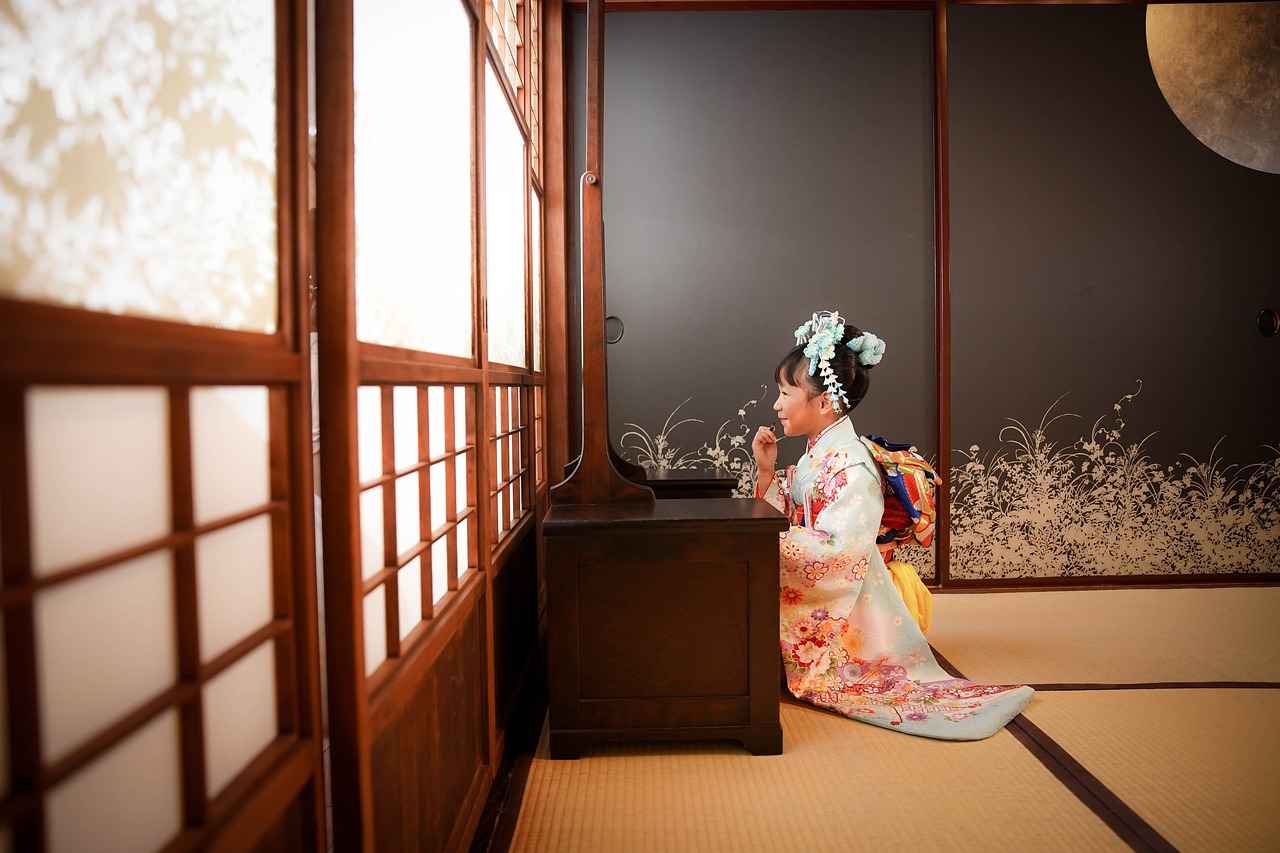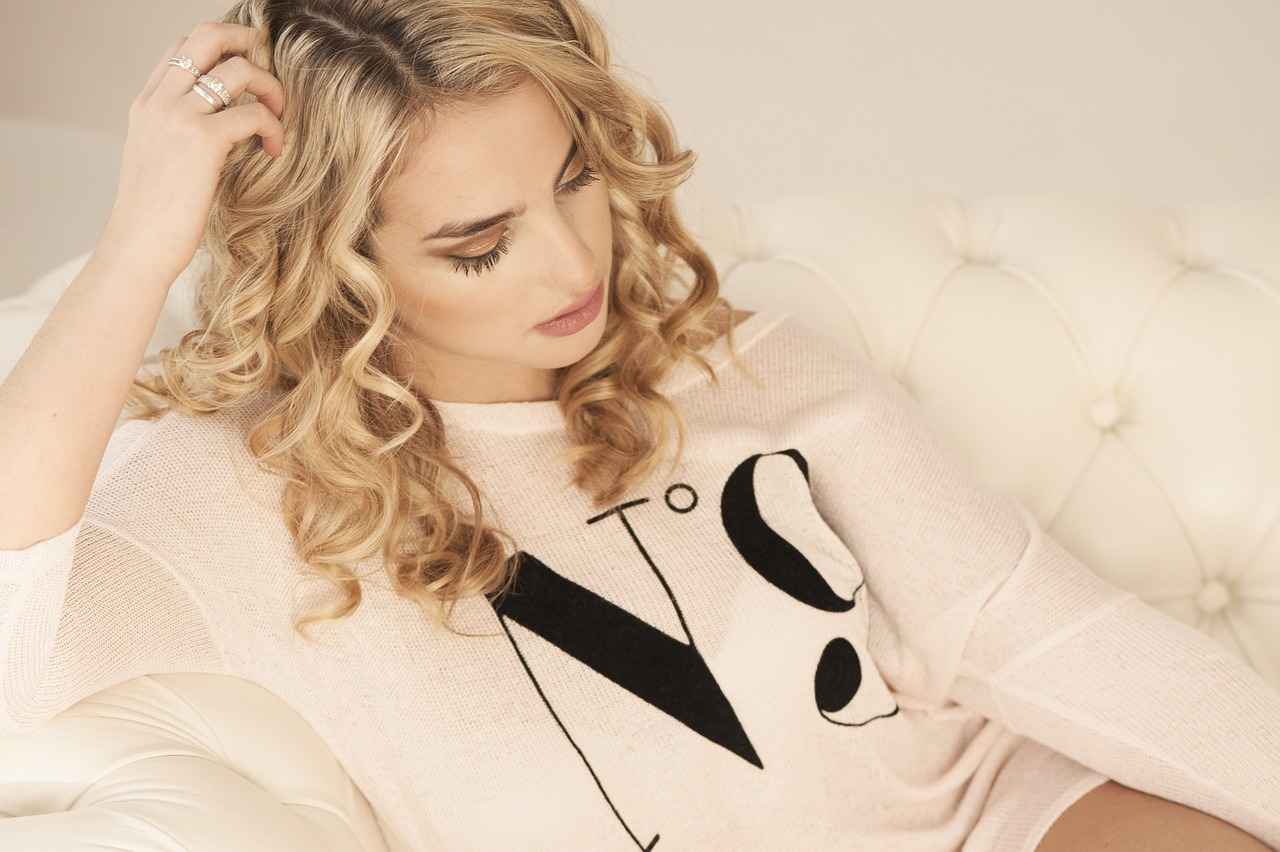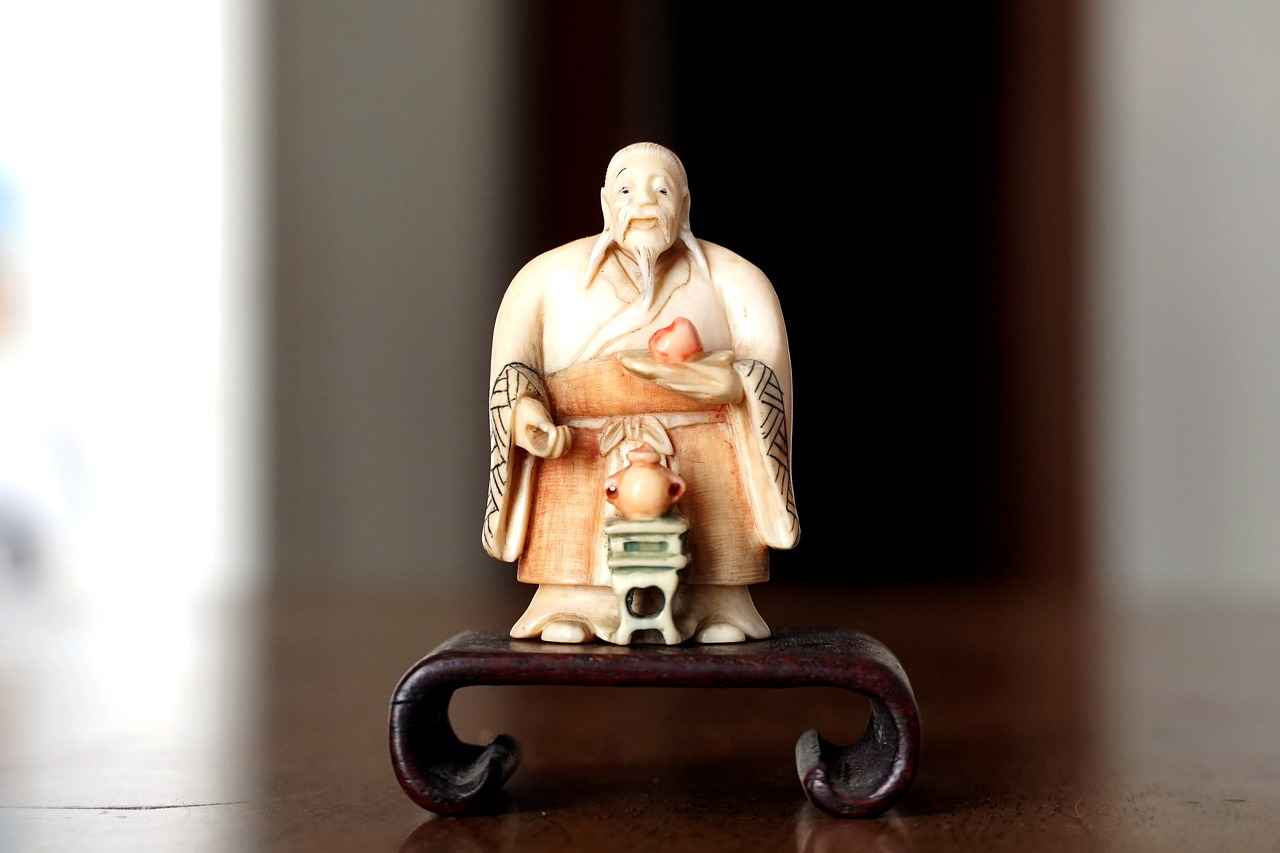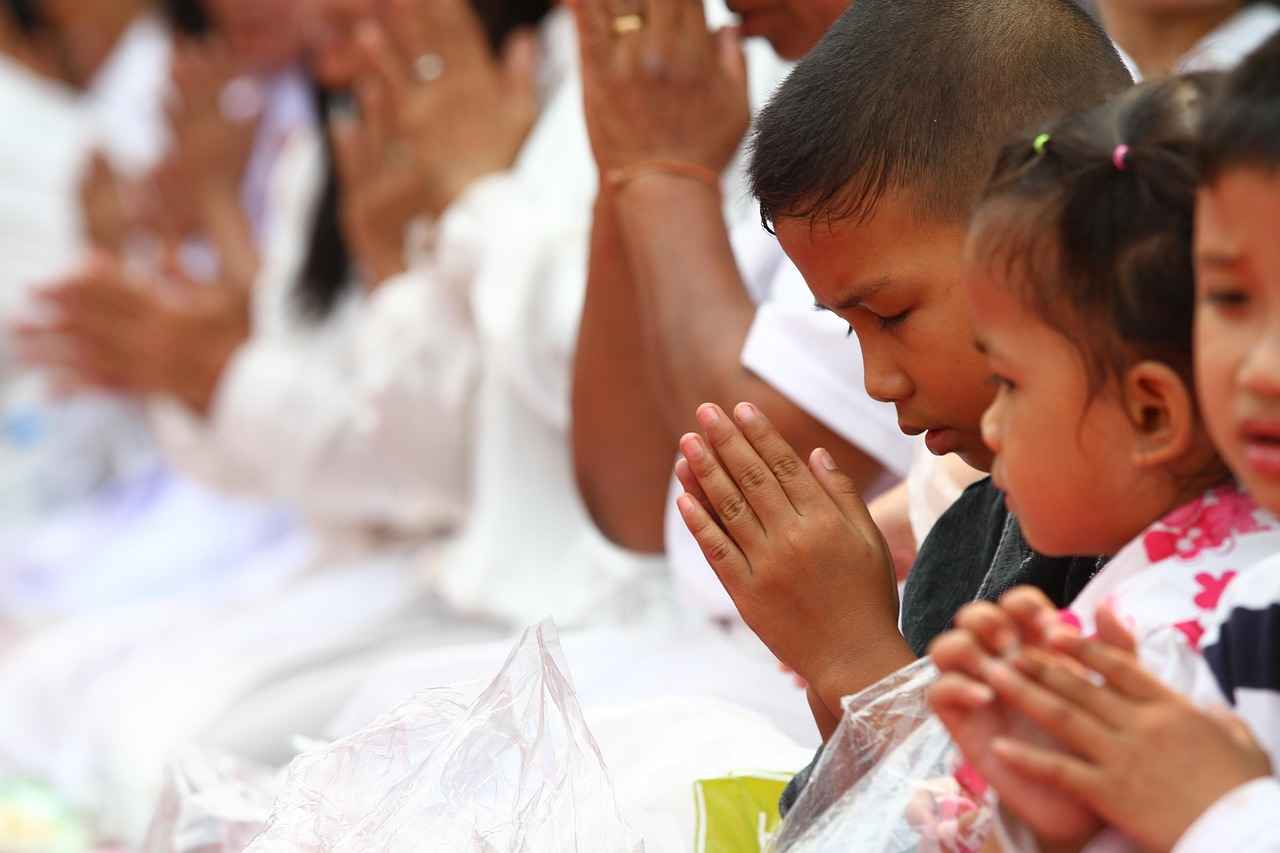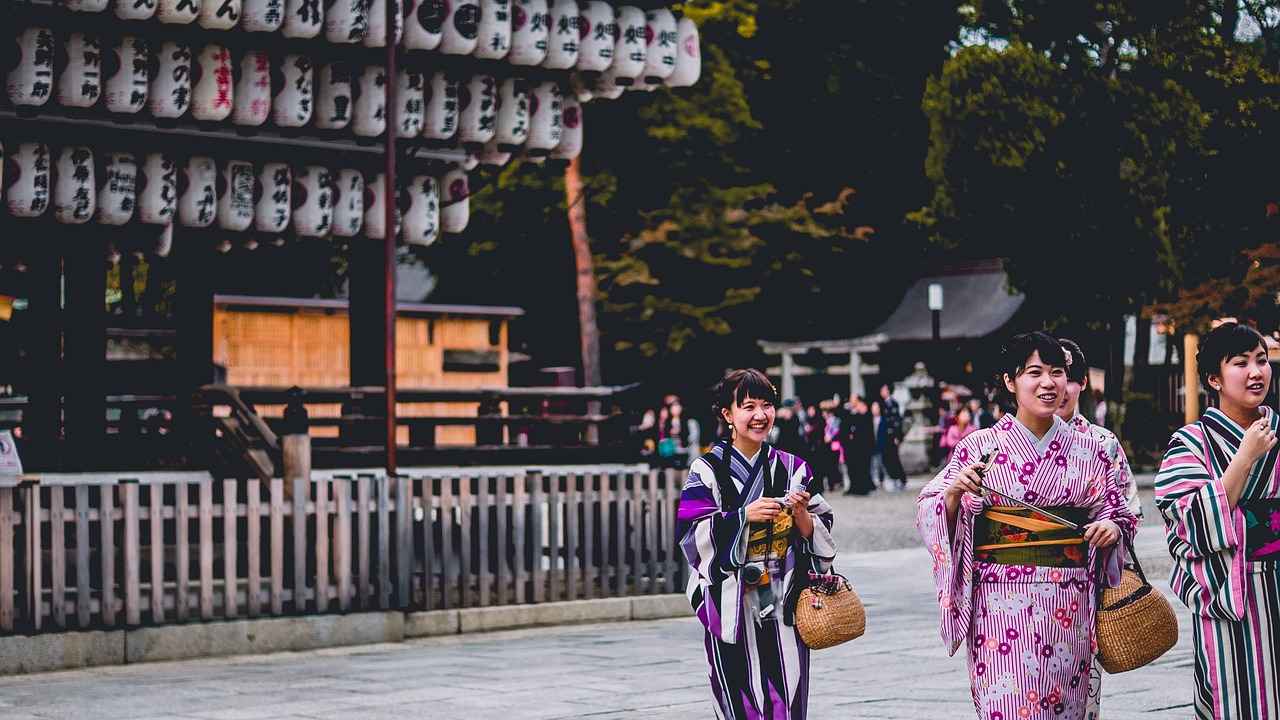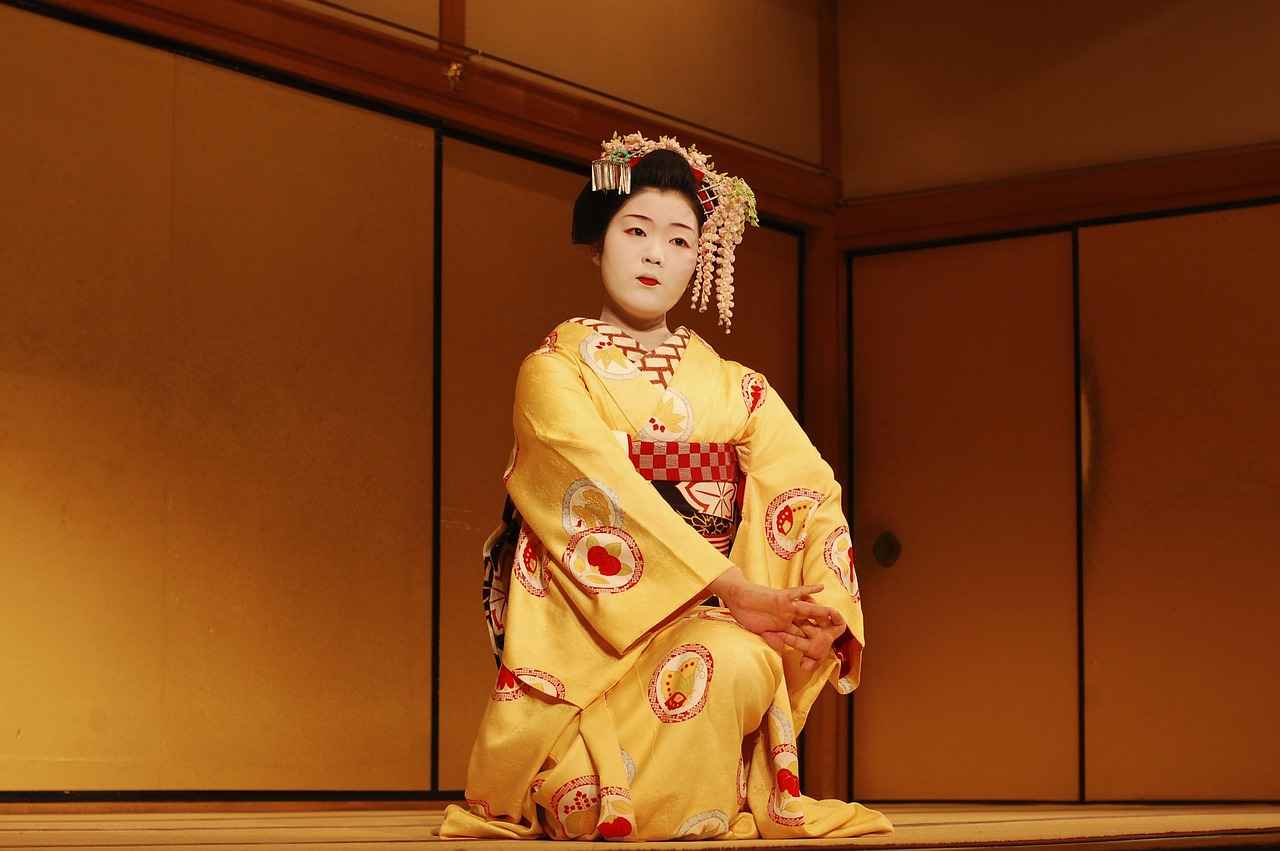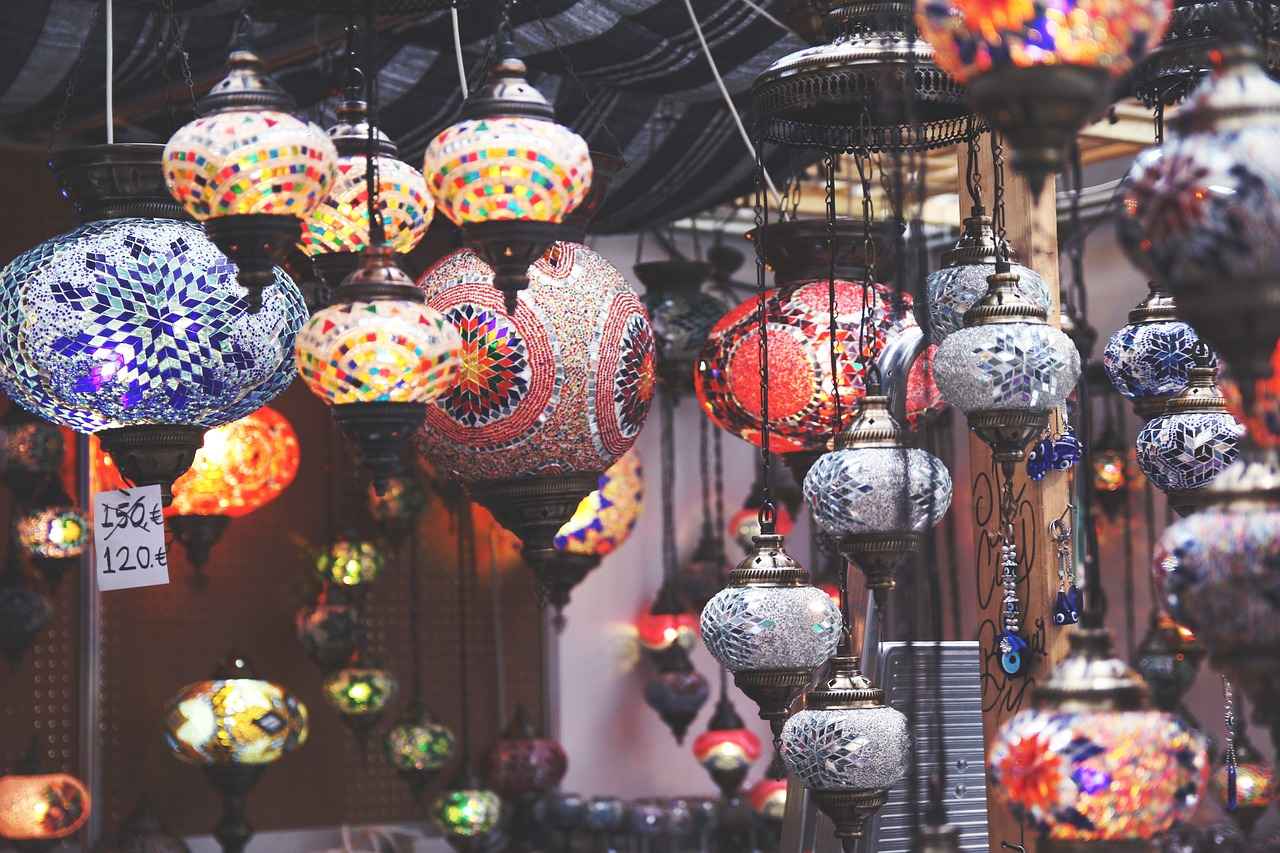This article explores the harmonious relationship between kimonos and obis, delving into their significance, styles, and how they complement each other in traditional Japanese attire.
The History of Kimono
The kimono has a rich history that dates back to ancient Japan. Initially worn by nobility, it has evolved into a symbol of cultural heritage. Over the centuries, various styles have emerged, reflecting the changing aesthetics and social norms of Japanese society.
The Significance of Obi
The obi is not merely a decorative belt; it is a vital component of the kimono ensemble. It symbolizes tradition and elegance, serving both functional and aesthetic purposes. The way an obi is tied can convey different meanings and levels of formality.
Types of Kimono Fabrics
- Silk Kimonos: Known for their luxurious feel and vibrant colors, silk kimonos are often reserved for formal occasions.
- Cotton Kimonos: These are more casual and breathable, making them ideal for summer wear.
Kimono Styles and Occasions
Different styles of kimonos are suited for various occasions, from weddings to tea ceremonies, each reflecting the wearer’s status and the event’s nature.
Obi Styles: A Closer Look
Obis come in various styles and widths, each contributing a unique flair to the kimono. Understanding these differences is essential for creating a well-coordinated outfit.
Choosing the Right Kimono and Obi Combination
Selecting the appropriate kimono and obi combination is crucial for achieving a harmonious look. Considerations include color, pattern, and the occasion.
Caring for Your Kimono and Obi
- Cleaning Techniques: Proper cleaning methods vary by fabric type, ensuring longevity and maintaining the garment’s beauty.
- Storage Recommendations: Store kimonos and obis properly to prevent damage and maintain their pristine condition.
In conclusion, understanding the intricate relationship between kimonos and obis enhances appreciation for traditional Japanese attire. By mastering the art of selection and care, one can preserve these beautiful garments for generations to come.
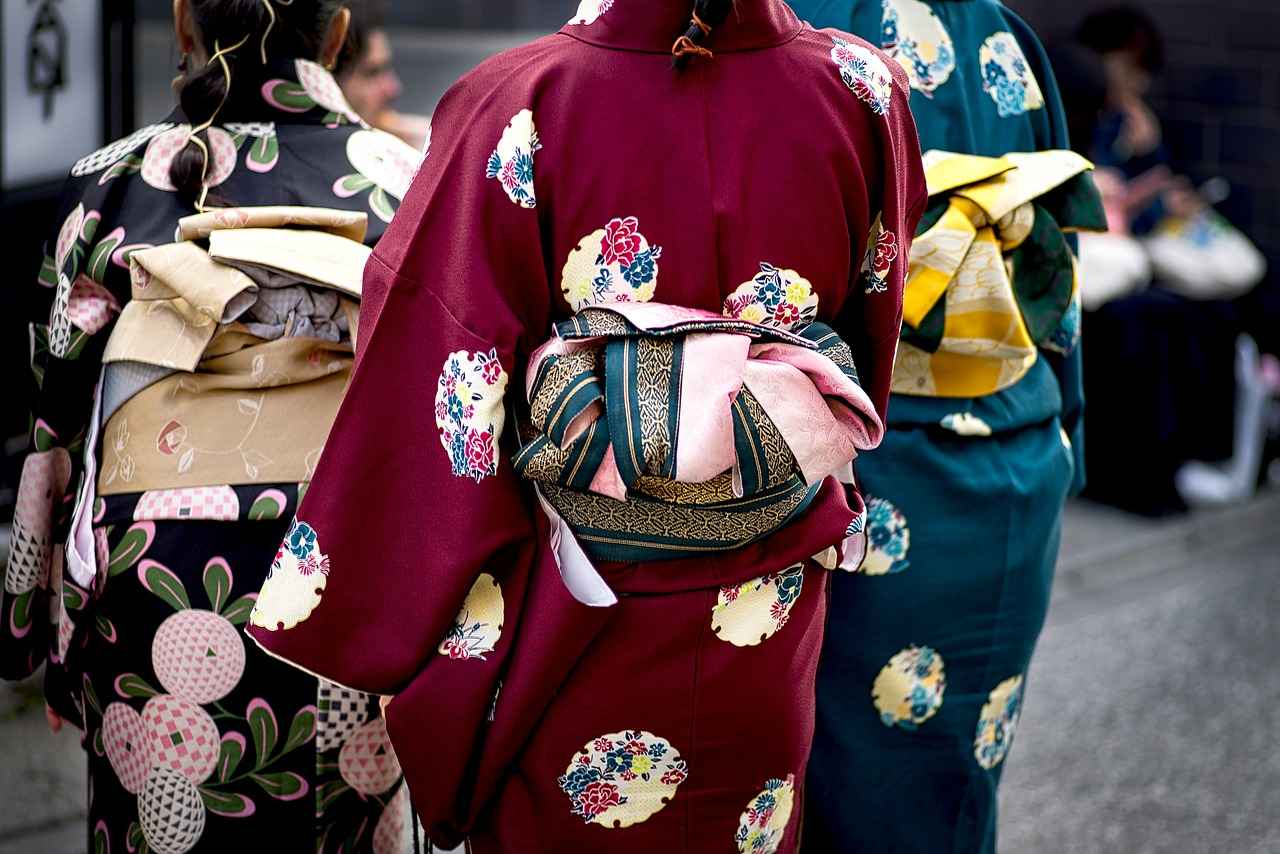
The History of Kimono
The history of the kimono is a fascinating journey through time, reflecting the cultural evolution and artistry of Japan. Understanding its origins not only sheds light on its significance but also reveals the various styles that have emerged over centuries. The kimono, a traditional garment, traces its roots back to the Heian period (794-1185), when it began as a simple robe. Over time, it evolved into a symbol of Japanese identity and sophistication.
Originally, the kimono was a practical garment, made from natural fibers such as silk and cotton. However, as Japan’s social structure evolved, so did the kimono’s design. Different classes adopted unique styles, colors, and patterns, which indicated their social status. For instance, the nobility wore elaborate kimonos adorned with intricate designs, while the commoners opted for simpler, more practical versions.
Throughout the Edo period (1603-1868), the kimono became a staple of Japanese fashion, with distinct styles emerging for various occasions. The furisode, characterized by its long sleeves, became popular among young women, symbolizing youth and unmarried status. In contrast, the tomosode, with its shorter sleeves, was favored by married women, showcasing a more subdued elegance.
As Japan entered the modern era, Western influences began to permeate traditional attire. Despite this, the kimono has retained its significance, often worn during ceremonies and festivals. Today, it represents a blend of tradition and contemporary fashion, with designers innovating while respecting the garment’s rich history.
In conclusion, the kimono is not just a piece of clothing; it is a cultural artifact that embodies Japan’s history, artistry, and social evolution. Understanding its origins and styles helps appreciate its enduring legacy in both traditional and modern contexts.
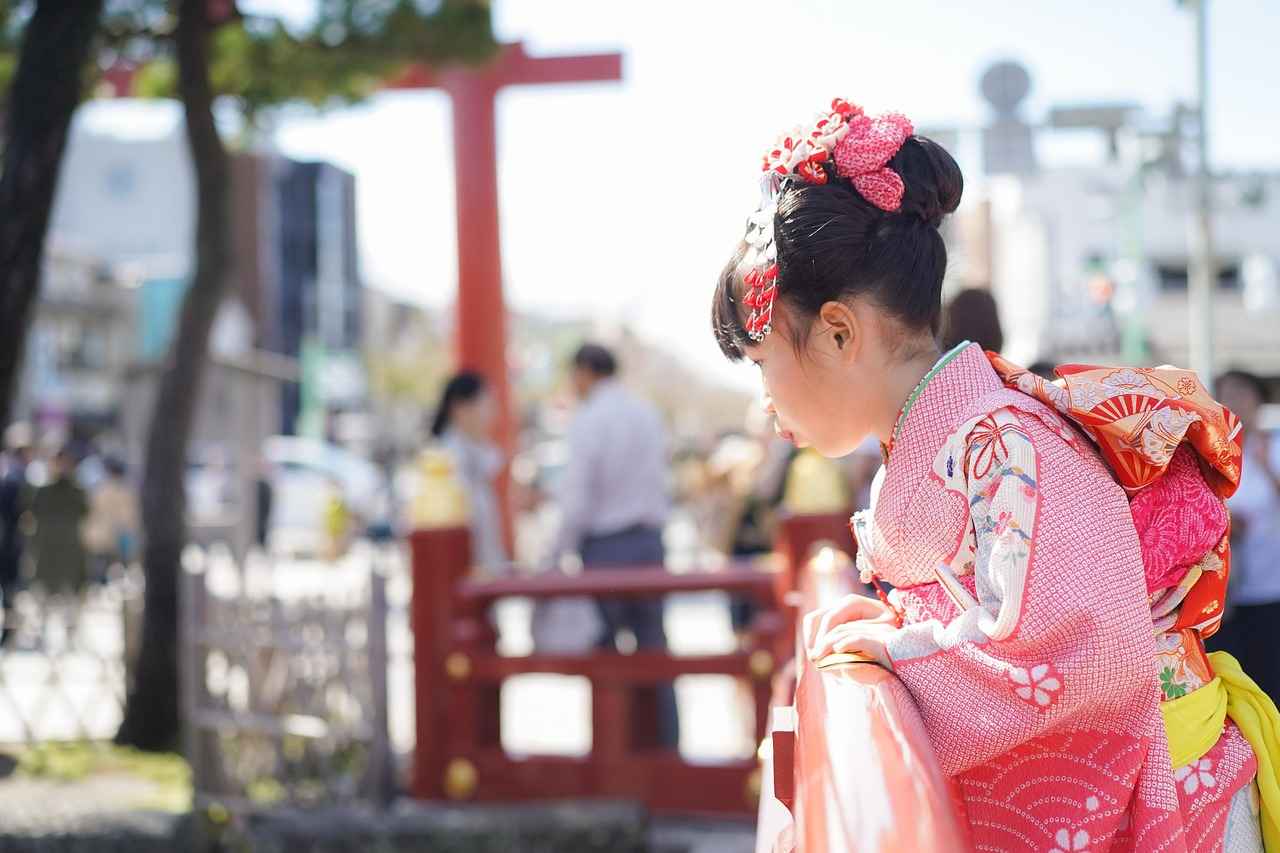
The Significance of Obi
The obi is an integral component of the traditional kimono, serving as more than just a belt. It is a symbol of elegance and cultural heritage in Japan, intricately woven into the fabric of Japanese society. The significance of the obi extends far beyond its functional purpose; it embodies the artistry and traditional values that define kimono attire.
Historically, the obi has evolved alongside the kimono, reflecting changes in fashion and societal norms. Originally, the obi was a simple cord used to secure the kimono, but over time, it transformed into a decorative element that showcases intricate designs and craftsmanship. Today, the obi is often made from luxurious materials such as silk and features elaborate patterns that can signify various themes, seasons, or celebrations.
In the context of kimono attire, the obi plays a crucial role in achieving a harmonious aesthetic. The way an obi is tied and styled can dramatically alter the overall look of the kimono. There are various tying techniques, each with its own significance and style. For instance, the taiko musubi (drum knot) is popular for formal occasions, while more casual knots may be used for everyday wear.
Moreover, the choice of obi can reflect the wearer’s personality and status. Different styles and colors convey distinct meanings; for example, a brightly colored obi might be chosen for festive occasions, while more subdued tones are appropriate for formal events. This thoughtful selection process highlights the cultural importance of the obi in expressing individuality within the framework of tradition.
In conclusion, the obi is not merely an accessory but a vital element that enhances the beauty and significance of kimono attire. Its role in Japanese culture is profound, symbolizing a blend of tradition, artistry, and personal expression. Understanding the significance of the obi allows one to appreciate the depth and richness of Japanese fashion and heritage.
Types of Kimono Fabrics
The fabric used in kimonos plays a significant role in determining their beauty and functionality. Each type of fabric brings its own unique characteristics, making it essential to choose the right one for different occasions and purposes. Here, we explore the most common fabrics used in kimonos: silk, cotton, and synthetic materials.
| Fabric Type | Characteristics | Uses |
|---|---|---|
| Silk | Luxurious, soft, and has a natural sheen | Formal occasions, weddings, and ceremonies |
| Cotton | Breathable, lightweight, and comfortable | Casual wear, summer festivals, and everyday use |
| Synthetic Materials | Durable, easy to care for, and often more affordable | Everyday wear and occasions where ease of maintenance is a priority |
Silk is the most traditional fabric for kimonos, revered for its luxurious feel and elegant appearance. It is often chosen for special occasions such as weddings and formal ceremonies. The natural sheen of silk adds a touch of sophistication, making it a favorite among kimono enthusiasts.
Cotton kimonos are favored for their comfort and breathability, especially during the hot summer months. They are often worn at casual events like summer festivals or as everyday attire. The versatility of cotton allows for vibrant patterns and prints, making these kimonos visually appealing and practical.
Synthetic materials, such as polyester, have gained popularity due to their affordability and low maintenance. These fabrics are durable and can mimic the appearance of silk or cotton, making them a practical choice for those who want a stylish kimono without the high upkeep.
In conclusion, the choice of fabric in a kimono is crucial in reflecting both the wearer’s style and the occasion. Understanding the unique characteristics of silk, cotton, and synthetic materials can help you select the perfect kimono for any event.
Silk Kimonos
represent the pinnacle of traditional Japanese attire, cherished for their luxurious texture and elegant sheen. This exquisite fabric has been woven into the cultural fabric of Japan for centuries, making it the preferred choice for formal occasions such as weddings, tea ceremonies, and other significant celebrations.
The history of silk kimonos dates back to the Heian period (794-1185), where they were initially reserved for the elite class. Over time, the use of silk became more widespread, and it evolved into various styles and designs, reflecting the wearer’s status and the event’s significance. The intricate patterns and colors often symbolize various meanings, from prosperity to good fortune, making each kimono a unique piece of art.
One of the most notable features of silk is its breathability and natural luster. Unlike synthetic fabrics, silk allows for optimal air circulation, providing comfort even during warmer months. Additionally, its softness against the skin enhances the overall wearing experience, making it a favorite among those who appreciate not only beauty but also comfort.
When it comes to care, silk kimonos require delicate handling. Proper cleaning techniques, such as dry cleaning or gentle hand washing, are essential to maintain the fabric’s integrity. Furthermore, storing silk kimonos in a cool, dry place, away from direct sunlight, helps prevent fading and damage.
In conclusion, silk kimonos are more than just garments; they are a symbol of tradition and elegance in Japanese culture. Their rich history, combined with their luxurious feel and aesthetic appeal, makes them an essential part of any formal wardrobe.
Cotton Kimonos
have become a beloved choice for casual wear, particularly during the warmer months. Their breathable fabric allows for excellent airflow, making them an ideal option for those hot summer days. Unlike heavier materials, cotton offers a lightweight feel that contributes to overall comfort, allowing wearers to enjoy leisurely activities without feeling restricted.
One of the standout features of cotton kimonos is their versatility. They can be easily styled for various occasions, from a relaxed day at home to a casual outing with friends. Pairing a cotton kimono with simple jeans or shorts creates a chic yet comfortable look that is perfect for summer festivals or beach trips. Additionally, these kimonos often come in a variety of colors and patterns, enabling individuals to express their unique style.
Moreover, cotton kimonos are not only practical but also easy to care for. They can typically be machine washed, making them a low-maintenance option compared to their silk counterparts. This practicality appeals to many who seek both style and functionality in their wardrobe choices.
In terms of cultural significance, cotton kimonos represent a blend of tradition and modernity. While they maintain the classic kimono silhouette, the use of cotton fabric reflects contemporary fashion sensibilities, making them accessible to a broader audience. They are often adorned with traditional motifs, bridging the gap between heritage and modern-day fashion.
In conclusion, cotton kimonos serve as a staple in casual summer wear, offering comfort, style, and cultural significance. Whether lounging at home or enjoying a day out, these kimonos provide the perfect combination of functionality and aesthetic appeal, making them an essential addition to any wardrobe.
Kimono Styles and Occasions
Kimonos are a quintessential part of Japanese culture, showcasing a rich tapestry of history and tradition. Each style of kimono is designed with a specific occasion in mind, making them versatile garments that cater to various events and social settings. Understanding the different kimono styles and their appropriate occasions enhances the appreciation of this beautiful attire.
Formal Kimonos are typically worn during significant ceremonies such as weddings, tea ceremonies, and graduations. These kimonos are often made from luxurious materials like silk and feature intricate designs and vibrant colors, symbolizing the importance of the event. For example, the shiro-muku is a traditional white kimono worn by brides, representing purity and new beginnings.
On the other hand, informal kimonos, such as yukatas, are perfect for casual outings, summer festivals, and family gatherings. Yukatas are usually made from lightweight cotton, making them comfortable and breathable, ideal for warmer weather. Their colorful patterns and designs reflect a more relaxed vibe, allowing for personal expression.
Another category is the komon, which can be worn for semi-formal occasions. These kimonos are characterized by their small, repeated patterns and are versatile enough to be dressed up or down, depending on the accessories used, such as a stylish obi.
Furthermore, the status of the wearer can influence the choice of kimono. For example, younger individuals may opt for brighter colors and modern patterns, while older generations might prefer traditional motifs that convey respect and heritage.
In conclusion, understanding the various styles of kimonos and their corresponding occasions is essential for anyone interested in Japanese culture. Whether it’s a formal ceremony or a casual outing, there’s a kimono style that perfectly suits the event, allowing wearers to express their identity and respect for tradition.
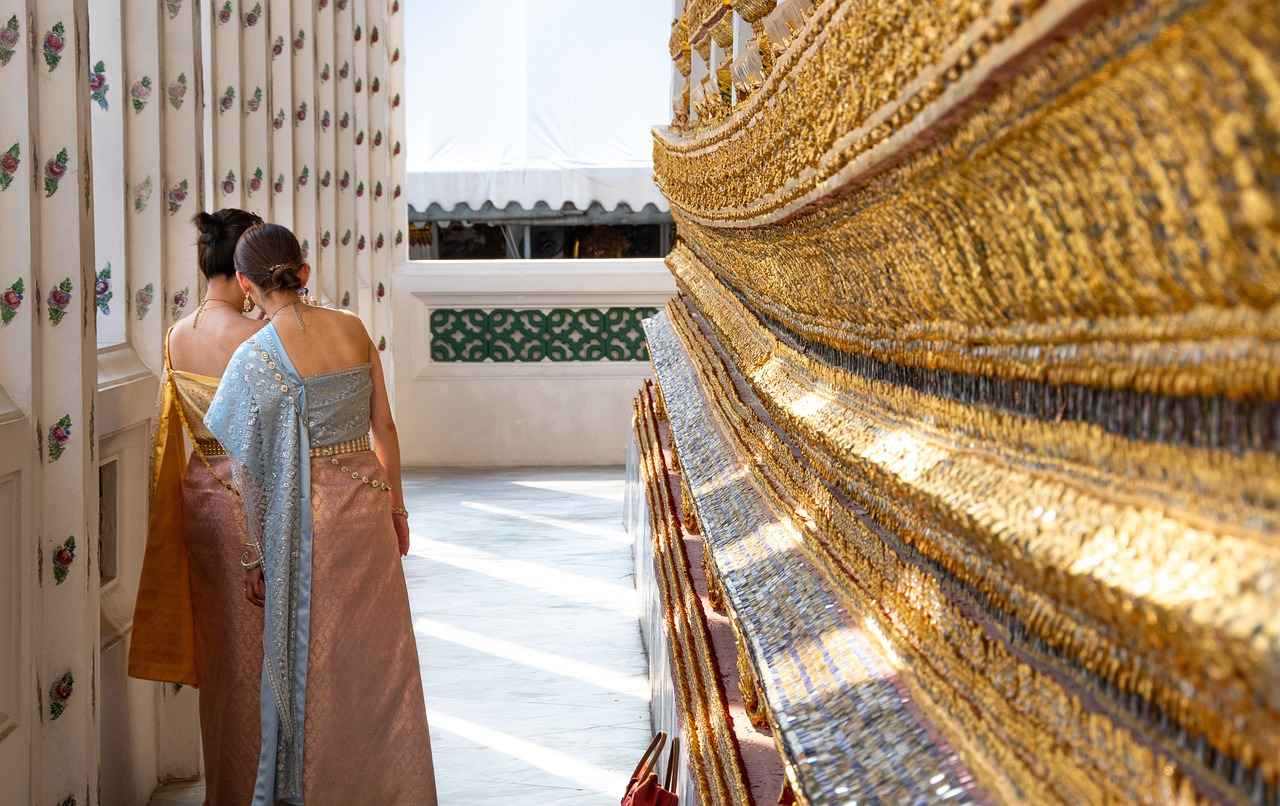
Obi Styles: A Closer Look
The obi is an integral part of the kimono ensemble, serving not only as a functional accessory but also as a statement of style and tradition. With a rich history and a variety of designs, the obi enhances the overall aesthetic of the kimono, making it essential to understand the different styles available.
Obis can be categorized based on their width, style, and tying methods, each contributing to the unique flair of the kimono. The two primary types of obis are:
- Wide Obi: Typically worn for formal occasions, wide obis are designed to make a bold statement. They often feature intricate designs and are tied in elaborate knots, adding elegance to the kimono.
- Narrow Obi: More versatile, narrow obis are suitable for casual wear. They are easier to tie and can be adorned with simpler patterns, making them a popular choice for daily use.
In addition to the types, the tying techniques used for obis play a significant role in the overall look. Some popular tying methods include:
- Taiko Musubi: This is a traditional knot that resembles a drum and is commonly used for formal occasions.
- Chouchin Musubi: A more casual knot, resembling a lantern, suitable for everyday wear.
Each obi style and tying method not only reflects personal taste but also adheres to the cultural significance of the kimono. When selecting an obi, consider factors such as the occasion, the kimono’s design, and your personal style preferences. The right combination can elevate your kimono attire, ensuring you embody the elegance and tradition of Japanese culture.
In conclusion, understanding the various obi styles and their significance is crucial for anyone looking to appreciate or wear a kimono. The obi is more than just an accessory; it is a vital element that completes the kimono ensemble, showcasing the beauty and intricacy of traditional Japanese fashion.
Types of Obi
are essential to understanding the art of kimono fashion. Each obi type serves specific purposes and reflects individual style preferences, enhancing the overall aesthetic of the kimono ensemble. In this section, we will explore the various types of obis, their characteristics, and their roles in traditional Japanese attire.
- Wide Obi (Fukuro Obi): This type of obi is typically worn for formal occasions. It is wider and more elaborate, often featuring intricate designs and patterns. The wide obi adds a touch of elegance and sophistication to the kimono, making it ideal for weddings and other ceremonial events.
- Narrow Obi (Hanabi Obi): A narrower version of the obi, the narrow obi is often used for casual wear. It is lighter and easier to tie, making it suitable for everyday kimonos or summer festivals. The simplicity of the narrow obi allows for a more relaxed and comfortable look.
- Pre-tied Obi (Obiage): This type of obi is designed for convenience. Pre-tied obis come ready to wear, making them popular among beginners or those who prefer a quick dressing option. They still provide a polished look without the complexity of traditional tying techniques.
- Obi with Accessories: Some obis come with additional accessories, such as obi cords and clips, which enhance their visual appeal. These accessories can add layers of texture and color, allowing for personalized expression within the traditional framework.
In conclusion, understanding the different is crucial for anyone interested in kimono fashion. Each type serves a unique role, whether it be for formal events or casual outings, and contributes significantly to the wearer’s overall appearance. By choosing the right obi, one can achieve a harmonious and stylish look that respects the rich traditions of Japanese culture.
Obi Tying Techniques
are an essential aspect of traditional Japanese attire, particularly when wearing a kimono. Mastering these techniques not only enhances the overall appearance of the kimono but also reflects the wearer’s understanding of cultural nuances and aesthetics. The art of tying an obi involves various knots and styles, each with its unique significance and visual appeal.
There are several popular obi knots that one can learn, each suited for different occasions and levels of formality:
- Taiko Musubi: This is one of the most popular knots, characterized by its drum-like shape. It is often used for formal occasions and provides a balanced look.
- Yamagata Musubi: A more casual style, this knot is simpler and often used for informal kimonos, making it perfect for everyday wear.
- Haneri Musubi: This knot is typically used for children’s kimonos and is known for its playful and vibrant appearance.
- Fukura Suzume: This intricate knot resembles a sparrow and is often chosen for special occasions, showcasing the wearer’s skill in obi tying.
Understanding the significance of each knot can enhance your overall presentation. For instance, the Taiko Musubi not only looks elegant but also symbolizes strength and stability, making it a favorite among those who wish to convey a sense of poise.
When learning to tie an obi, it is crucial to practice the following steps:
1. Start with the obi wrapped around the waist.2. Cross the ends at the back and bring them to the front.3. Tie a simple knot to secure the obi in place.4. Create the desired knot style using the appropriate folding techniques.5. Adjust the knot for balance and aesthetics.
In conclusion, mastering is not just about aesthetics; it is a way to connect with Japanese culture and tradition. By understanding the various styles and their meanings, you can enhance your kimono experience and showcase your appreciation for this beautiful art form.
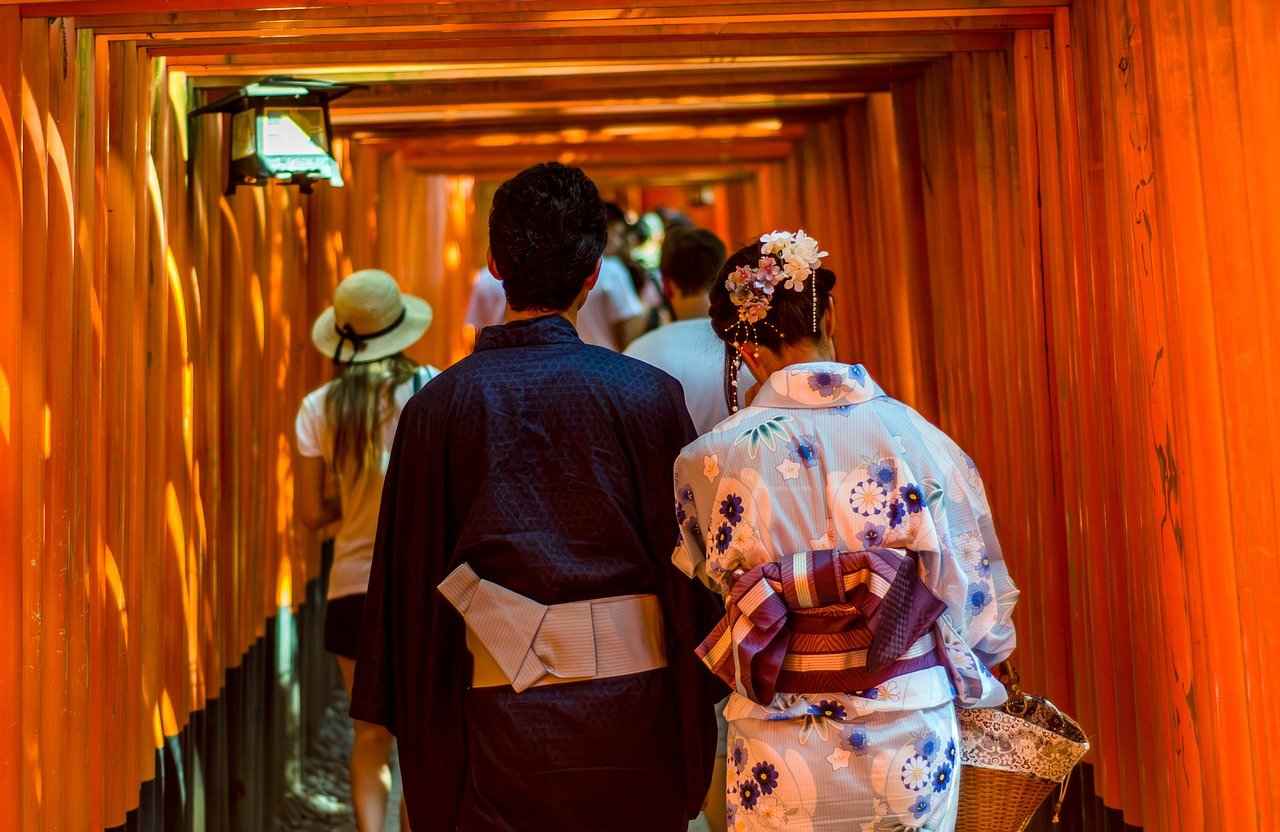
Choosing the Right Kimono and Obi Combination
is an art that requires thoughtful consideration of various elements to achieve a visually stunning and culturally appropriate ensemble. The kimono, a traditional Japanese garment, paired with the obi, a decorative belt, creates a complete look that reflects the wearer’s personality and the occasion’s significance.
When selecting a kimono and obi, the first step is to consider the color. Different colors evoke different emotions and meanings in Japanese culture. For instance, red symbolizes happiness and good fortune, while blue represents calmness and stability. Therefore, it is essential to choose colors that resonate with the event and your personal style.
Next, the pattern plays a crucial role in the overall aesthetic. Kimonos often feature intricate designs, while obis can be more subtle or bold, depending on the desired effect. When mixing patterns, aim for a balance that does not overwhelm the viewer. A common guideline is to pair a patterned kimono with a solid-colored obi or vice versa to maintain harmony.
Consider the occasion as well. Formal events typically require more subdued colors and elegant patterns, while casual settings allow for brighter colors and playful designs. For instance, a wedding might call for a luxurious silk kimono with a delicate floral obi, whereas a summer festival could embrace a lightweight cotton kimono with a vibrant, patterned obi.
Lastly, accessories can enhance the overall look. Complementing your kimono and obi with the right footwear and hair accessories will create a cohesive appearance. Remember, the goal is to achieve a harmonious look that reflects both tradition and personal flair.
In conclusion, choosing the right kimono and obi combination is essential for creating a cohesive and elegant outfit. By considering color, pattern, occasion, and accessories, you can ensure that your ensemble is not only beautiful but also culturally significant.
Color Coordination Tips
Color coordination is an essential aspect of pairing kimonos and obis, significantly influencing the overall aesthetic and cultural resonance of traditional Japanese attire. Understanding the nuances of color theory can elevate your kimono ensemble to new heights, ensuring that your selections are both visually appealing and culturally appropriate.
When selecting a kimono and obi combination, it is crucial to consider the color wheel. Colors that are opposite each other on the wheel, known as complementary colors, can create a striking and balanced look. For instance, pairing a vibrant red kimono with a green obi can produce a stunning visual impact. On the other hand, using colors that are next to each other, or analogous colors, can create a more subtle and harmonious appearance. A soft pink kimono with a light peach obi exemplifies this approach.
Additionally, consider the season and occasion when choosing your colors. Lighter hues are often favored during spring and summer, while deeper, richer tones are more suitable for autumn and winter. For formal events, opting for traditional colors such as indigo, black, or gold can enhance the elegance of your outfit.
Another critical factor is the pattern of both the kimono and the obi. When working with patterned fabrics, it’s essential to maintain balance. A bold, intricately designed kimono can be complemented with a simpler, solid-colored obi to avoid visual chaos. Conversely, if your kimono is more subdued, a patterned obi can add a delightful contrast.
In summary, mastering color coordination in kimono and obi pairing involves understanding color relationships, considering seasonal appropriateness, and balancing patterns. By applying these principles, you can create a stunning and culturally resonant outfit that reflects the beauty of traditional Japanese fashion.
Pattern Mixing Guidelines
Mixing patterns in a kimono ensemble can truly enhance its visual appeal, but it requires a careful approach to achieve a harmonious balance. The art of combining different patterns is not just about boldness; it’s about creating a cohesive look that resonates with elegance and style. Here are some key strategies to consider when mixing patterns in your kimono attire:
- Start with a Base Pattern: Choose a primary pattern that will serve as the foundation of your outfit. This could be a floral design, stripes, or geometric shapes. The base pattern should be the most dominant and set the tone for the rest of your ensemble.
- Complement with Secondary Patterns: Select one or two secondary patterns that complement the base. These should be less bold and can include smaller prints or subtle textures. The goal is to create a layered effect without overwhelming the overall look.
- Stick to a Color Palette: When mixing patterns, it’s essential to maintain a cohesive color scheme. Choose patterns that share similar colors or tones to ensure that they work well together. This will create a unified appearance, making the ensemble look intentional.
- Vary the Scale: Mixing patterns of different scales can add depth to your outfit. For example, pairing a large floral print with a smaller polka dot can create an interesting contrast while maintaining harmony. This technique keeps the eye engaged without clashing.
- Use Solid Colors as Anchors: Incorporating solid colors can provide a visual break in your ensemble. This can help to ground the outfit and prevent it from becoming too busy. A solid obi or accessory can serve this purpose effectively.
- Consider the Occasion: The context in which you wear your kimono should influence your pattern choices. For formal events, opt for more subdued and elegant patterns, while casual outings allow for bolder and more playful combinations.
By following these guidelines, you can confidently mix patterns in your kimono ensemble, creating a look that is both stylish and sophisticated. Remember, the key is to maintain balance and harmony, allowing each pattern to shine without overshadowing the others.
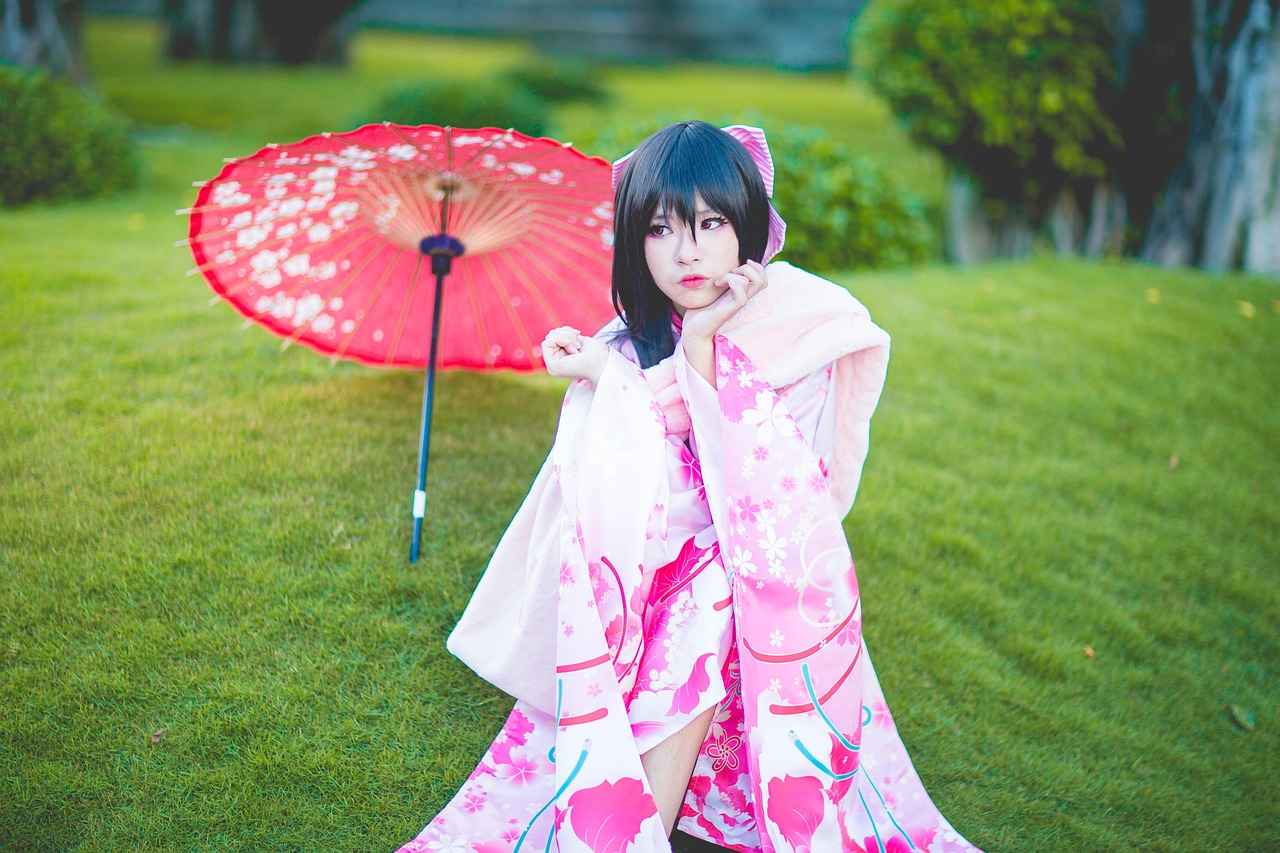
Caring for Your Kimono and Obi
Proper care and maintenance of kimonos and obis are essential for preserving their beauty and longevity, ensuring they remain a cherished part of your wardrobe. These traditional garments are not only significant in Japanese culture but are also delicate pieces that require thoughtful handling to maintain their exquisite appearance.
- Regular Inspection: Periodically check your kimono and obi for any signs of wear, such as fraying edges or discoloration. Early detection of issues can prevent further damage.
- Cleaning Techniques: Different fabrics require specific cleaning methods. For silk kimonos, dry cleaning is often recommended, while cotton kimonos can usually be hand-washed in cold water. Always follow the care instructions specific to each garment.
- Storage Recommendations: Store your kimonos and obis in a cool, dry place, away from direct sunlight. Use breathable garment bags to prevent dust accumulation and to avoid moisture damage.
- Ironing and Steaming: If your kimono or obi becomes wrinkled, use a steam iron on a low setting or a garment steamer to gently remove creases. Always test a small area first to ensure there is no damage.
- Avoiding Moths: To protect your garments from moth damage, consider using cedar blocks or lavender sachets in your storage area, as these natural repellents can deter pests.
By following these guidelines, you can ensure that your kimonos and obis remain in excellent condition, allowing you to enjoy their beauty for years to come. Remember, the care you provide reflects the respect for the craftsmanship and tradition they embody.
Cleaning Techniques
Proper care for your kimono and obi is essential to preserve their beauty and extend their lifespan. Understanding the best cleaning methods for different fabrics can help maintain the quality of your kimono and obi, preventing damage and fading over time. Here are some key techniques to consider:
- Silk Kimonos: These luxurious garments require gentle handling. It is advisable to dry clean silk kimonos to avoid water damage. If you must wash them, use cold water and a mild detergent specifically designed for silk.
- Cotton Kimonos: Cotton is more durable and can be machine washed. Use a gentle cycle with cold water to maintain color vibrancy. Avoid bleach, as it can cause fading.
- Synthetic Fabrics: Kimonos made from synthetic materials are typically more resilient. They can usually withstand machine washing, but it is best to follow the manufacturer’s care instructions.
In addition to fabric-specific techniques, here are some general cleaning tips:
- Spot Cleaning: For minor stains, use a soft cloth and a mixture of water and mild detergent. Gently dab the stain without rubbing.
- Air Drying: Always air dry your kimonos and obis by laying them flat or hanging them in a shaded area. Direct sunlight can cause fading.
- Regular Maintenance: Regularly inspect your garments for any signs of wear or damage. Addressing issues promptly can prevent larger problems down the line.
By following these cleaning techniques, you can ensure that your kimono and obi remain in excellent condition, allowing you to enjoy their beauty and cultural significance for many years to come.
Storage Recommendations
To ensure the longevity and beauty of your kimono and obi, it is essential to implement proper storage techniques. These garments are not only significant in traditional Japanese culture but also represent a considerable investment in craftsmanship and artistry. Therefore, safeguarding them from wrinkles, dust, and damage is crucial.
- Choose the Right Environment: Store your kimono and obi in a cool, dry place away from direct sunlight. Exposure to light can fade colors and weaken the fabric over time.
- Use Breathable Garment Bags: Invest in high-quality, breathable garment bags made from cotton or silk. These materials allow the fabric to breathe while providing a protective barrier against dust and pests.
- Avoid Hangers: Hanging your kimono can lead to stretching and distortion. Instead, consider folding them neatly and storing them flat or rolled to maintain their shape.
- Use Acid-Free Tissue Paper: When folding your kimono or obi, place acid-free tissue paper between the folds. This helps prevent creases and protects the fabric from damage.
- Regular Checks: Periodically inspect your stored garments for any signs of pests or damage. Early detection can prevent further deterioration.
- Climate Control: If possible, maintain a stable temperature and humidity level in the storage area. Extreme fluctuations can harm delicate fabrics.
By following these , you can ensure that your kimono and obi remain in pristine condition for years to come. Proper care not only preserves the beauty of these garments but also honors the rich cultural heritage they represent.
Frequently Asked Questions
- What is the difference between a kimono and an obi?
A kimono is a traditional Japanese garment, while an obi is the sash or belt worn around the waist to secure the kimono. Think of the kimono as the beautiful canvas and the obi as the frame that completes the artwork!
- How do I choose the right kimono and obi combination?
Selecting the perfect pair involves considering color, pattern, and occasion. It’s like putting together a puzzle; each piece should complement the others for a harmonious look!
- What types of fabrics are kimonos made from?
Kimonos can be made from various fabrics, including silk, cotton, and synthetic materials. Each fabric has its own charm—silk is luxurious, while cotton is breathable and casual!
- How should I care for my kimono and obi?
Proper care includes gentle cleaning and appropriate storage. Treat them like treasured heirlooms to ensure they last for years to come!
- Can I mix patterns when wearing a kimono and obi?
Absolutely! Mixing patterns can add flair, but it requires a good eye for balance. Think of it like a dance; both partners need to move in sync to create a beautiful performance!
